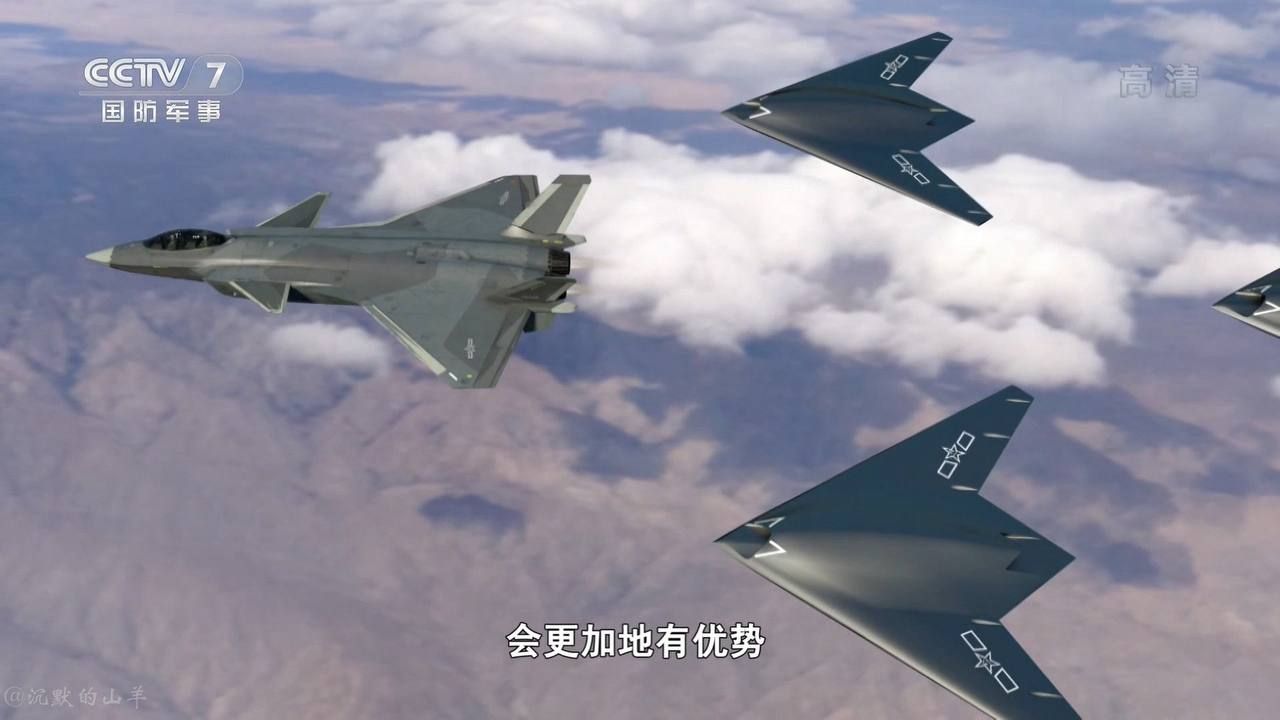A video on Chinese state television has shown a replica of the under-development FH-97 loyal wingman unmanned aerial vehicle (UAV) releasing an FH-901 kamikaze drone.
Taiwan Will Not Be Another Ukraine Despite China’s Military Superiority; India Can Play A Critical Role
Interestingly, the FH-97 has been reported to operate alongside the J-20 fighter as a part of a manned-unmanned teaming concept.
This, therefore, marks another step in the rapid evolution of the wingman drone concepts, where the UAVs don’t only offer surveillance, sensing, targeting, or data transfer support to the manned fighter but also undertake combat roles.
Drone Releasing Drone
The drones have been developed by the Feihong Company – a state-owned China Aerospace Science and Technology Corporation (CASTC) subsidiary.
The video shared by many Twitter handles showed a replica model of the FH-97, releasing the FH-901 from its internal weapons bay, tethered to a rope. The FH-97 is also shown to have an electro-optical tracking system in the front over the nose. Its design is like the one on the J-20 and the F-35.

The FH-97 has previously been paired with the J-20 in earlier concept videos. But it is not known whether the FH-901 suicide drone launching feature is on a different variant or a standard feature.
China’s Loyal Wingman For The J-20
A South China Morning Post (SCMP) report from early April specified the ‘A’ variant of the FH-97 that is being developed to be paired with the J-20.
The drone’s purpose will be to “free up the J-20 from frontline combat tasks so that it can specialize in functions such as command and control, data distribution and interruption of communication,” SCMP quoted from the Naval and Merchant Ships magazine.
Western media had described the high-speed combat drone as a clone of the American Kratos XQ-58A Valkyrie, a jet-powered UAV designed to fly alongside manned fighter jets such as the F-35 or F-22 and navigate autonomously.
The FH-97 also shares much of its design with the J-20, particularly the front nose section, middle fuselage, and side air intakes. The stealth fighter has also been previously paired with other wingmen drones like the GJ-11 ‘Sharp Sword’ in previous concept videos reported by the EurAsian Times. But those UAVs were not shown releasing munitions separately.
Promising Drone, Still Far Away From Flying
The same report in the South China Morning Post (SCMP) also quoted defense and naval experts discussing the difference between the FH-97 and the Valkyrie.
Beijing-based military analyst Zhou Chenming said they were “two different designs with their own merits.” “The Valkyrie is a subsonic drone, while the FH-97A is a super-speed variant,” he said.
FH-97 Stealth UAV/loyal wingman along with FH-901 loitering munitions, meant to be launched from its internal weapons bay
It also features an electro-optical sensor pic.twitter.com/n3ma2OVSBy
— Húrin (@intel1osint100) June 4, 2023
Li Jie, a naval expert in Beijing, noted that China had started developing drone technology in the 1960s. He said the use of unmanned aerial vehicles in the war in Ukraine had inspired the Chinese People’s Liberation Army to put more resources into hybrid warfare – integrating manned and unmanned weapon systems.
“Drone warfare could help the PLA to deter US aircraft from conducting close-in reconnaissance along China’s southeastern coast if it can develop more of these ‘loyal wingman’ drones and get them into service,” Li said.
This means incidents like the May 26 encounter, where a PLAAF J-16 flew in front of the nose of an American RC-135 electronic intelligence aircraft to prevent it from carrying out its mission over the South China Sea (SCS), could be undertaken by UAVs like the FH-97A.
That Li said this almost two months before the incident means Chinese military planners already have a role envisaged for such unmanned aircraft.

Actual Drone Flight Will Answer More Questions
However, it is far from operationalized, and many technical aspects remain unclear. Whether the F-97 will be operating autonomously or controlled by another fighter at a distance for such interceptions? Also, would it carry the FH-901 suicide drone while scaring away US aircraft?
Moreover, intercepting electronic warfare aircraft like the RC-135 would be even riskier since they can jam and disable the aircraft. But it is unlikely that a technologically advanced air force like the PLAAF might make such a fundamental mistake.
Nevertheless, kinetic projectiles like suicide drones launched from wingman drones can have massive tactical benefits, especially during air-to-ground missions.
- The author can be reached at satamp@gmail.com
- Follow EurAsian Times on Google News





